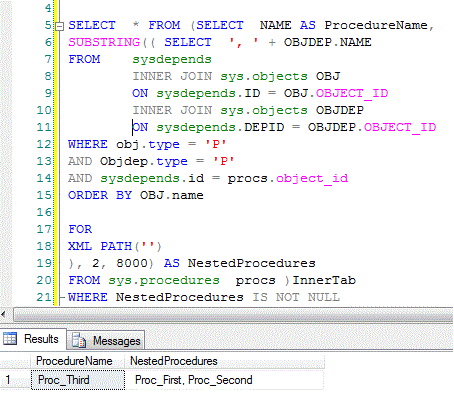Wir zeigen es Ihnen anhand von Beispielen. Each employee belongs to one and only one department while each department can have more than one employee. The relationship between the employees and departments table is one-to-many. Zum Thema Mehrfach- JOINs sei der weiterführende Artikel Fortgeschrittene Joins empfohlen. INNER JOIN ist der Inhalt dieses Kapitels.
OUTER JOIN wird im nächsten Kapitel. Die Beispiel-Tabellen als MySQL-Dump. Für den Fall, dass Sie die unten stehenden Beispiele nachvollziehen wollen hier den Dump-Code, den Sie als Datei. Keine Setup- und Abo-Kosten. SQL provides several types of joins such as inner join , outer joins ( left outer join or left join , right outer join or right join , and full outer join ) and self join.
SQL JOINS – Grundlagen eines SQL JOINS In relationalen Datenbanksystemen werden Informationen aus einem oder mehreren Anwendungssystem(en) systematisch gespeichert. Die Zusammengehörigkeit der Daten ergibt sich aus dem logischen Datenbankdesign , die meist in Form eines Entity-Relationship-Modells dokumentiert ist. Art von Join ausgeführt wird: innerer Join , äußerer Join oder Cross Join.
There are four basic types of SQL joins : inner , left, right, and full. The easiest and most intuitive way to explain the difference between these four types is by using a Venn diagram, which shows all possible logical relations between data sets. A complex SQL query that includes one or more inner joins and several outer joins has the same risk for NULL values in the inner join link columns. A commitment to SQL code containing inner joins assumes NULL join columns will not be introduced by future changes, including vendor updates, design changes and bulk processing outside of the.
Notice that he never said it just returns records from one table. It does not return a row if it does not have a match in either of the tables. The user_id does not have an order in the orders table and does not get returned.

Example 2: Join Three Tables. Inner joins eliminate rows from both tables that do not satisfy the join condition set forth in the ON statement. In mathematical terms, an inner join is the intersection of the two tables. Inner join - Ein inner join mit einer der äquivalenten Abfragen gibt die Schnittmenge der beiden Tabellend. Zeilen, die Sie gemeinsam haben.
When using an inner join , there must be at least some matching data between two (or more) tables that are being compared. Upon finding it, the inner join combines and returns the information into one new table. An inner join searches tables for matching or overlapping data. The nature of relational database design means that we will often have related data that is stored in different tables.
SQL Inner Join - examples and explanations. To retrieve data from two or more tables in one query we use the SQL JOIN statement. It is the most common type of join.
Recursive joins are often used to obtain parent-child data. The INNER join is such a join when equijoins and nonequijoins are performe rows from the source and target tables are matched using a join condition formulated with equality and inequality operators, respectively. Dies ist die am häufigsten verwendete Verknüpfungsart.
Innere Verknüpfungen kombinieren Datensätze aus zwei Tabellen, wenn in einem für beide Tabellen gemeinsamen Feld übereinstimmende Werte vorhanden sind. Das Ergebnis sollte alle Felder (dscWert) des Objekts Autor zurückliefern, und zwar sortiert nach der Sortierung in der Objekte-Tabelle. Das Resultat bestand aber aus Einträge, nicht nur deren 5. The scope of expressions in the ON clause includes the current tables and any tables in outer query blocks to the current SELECT. In an inner join , only rows that appear in both tables in a SQL query are selected.
The syntax and an example of an inner join SQL query is shown. It creates a new result table by combining column values of two or more tables. Moreover, we will also see join query in SQL and SQL Join example. Along with this, we will discuss cartesian Join and Self Join in SQL. So, let’s start SQL Join.
Doch es gibt noch weitere JOIN -Typen die im folgenden behandelt werden. A SQL JOIN combines records from two tables. A JOIN locates related column values in the two tables. A query can contain zero, one, or multiple JOIN operations.
LEFT JOIN − returns all rows from the left table, even if there are no matches in the right table. RIGHT JOIN − returns all rows from the right table, even if there are no matches in the left table. Rein nach SQL ist es so richtig - ergo muss ich mir die Daten genauer aunschauen.
Um antworten zu können musst du eingeloggt sein.
Keine Kommentare:
Kommentar veröffentlichen
Hinweis: Nur ein Mitglied dieses Blogs kann Kommentare posten.